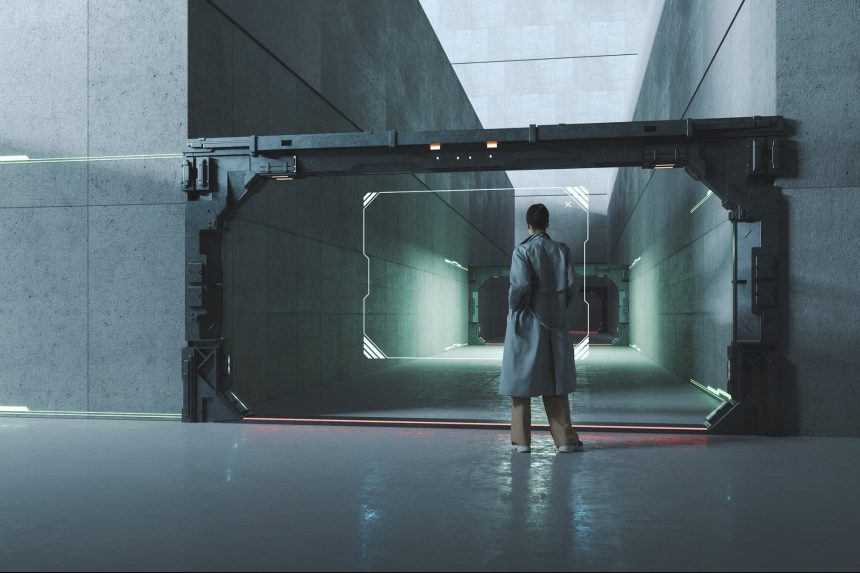I’ve been a lawyer for 20 years now. That’s mind-blowing to me because it seems like just yesterday that I was driving down to New Orleans for my first year of law school. But the fact remains, 20 years have passed, and I seem to be way better at getting injured doing harmless things than I was back when I was 23 years old. But what is really scary is how little the practice of law has changed in the 20 years since I started. Let me explain.
Twenty years is a long time, but technology (good technology) existed back then. We had powerful desktop computers, laptops and handheld devices (queue the Blackberry jokes) that could still do amazing things, automating complex tasks and allowing us to communicate across the country with ease. Yet, when I would go to state court for hearings, we would use carbon paper (yes, carbon paper) to make duplicate copies of orders. If you needed a document from a prior case, you would head down to the clerk’s desk and ask for the redweld so you could leaf through the paper file. I would record my time in six-minute increments on a daily basis by writing it in pen on a paper time sheet.
For the 11 years I was in private practice, nothing changed. In fact, I’m not sure anything has changed in the nine years since I left private practice. For all I know, attorneys are still looking for the least used piece of carbon paper to make sure they don’t have to press too hard to make a legible copy. Many court decisions are still memorialized solely in paper files or unscannable pdfs. There is an abundance of attorneys who are demanding a return to in-person hearings instead of virtual proceedings.
Related: Why Embracing Change is the Best Catalyst for Growth
The costs associated with ignoring innovation
While this all seems amusing (and a little mind-boggling), it speaks to a larger problem in the legal industry and several other industries as well. The entrenchment of ideas and processes. The fear of the novel. The trepidation associated with changing things from “the way they’ve always been done.” I don’t mind tradition, and it most certainly has its place. But the fact is, there are real costs associated with doing things the same way simply because they are familiar and comfortable. And those costs can trickle down.
Let’s take a basic example of in-person hearings. Back in the day, it wasn’t uncommon for an attorney to have to attend a status hearing in person, even if it was occurring across the country. That would necessitate airfare, lodging, meals, as well as additional travel time billed to the file. Depending on the number of attorneys involved in the case, it is not remotely inconceivable that an in-person hearing could cost the client five to ten times what a Zoom hearing would cost, maybe more. If the company has a lot of litigation, those costs will increase exponentially for each case on the company’s docket. In contrast, with a basic Zoom hearing, an attorney can now jump into the proceeding, inform the court of the status and jump back out, all while never leaving their desk. But not all attorneys like virtual proceedings. Because they’re novel … different.
Related: The Power of Innovation
Why should you care?
Why do you care, you may ask? Well, those are costs associated with doing business that need to be mitigated or paid for somehow — which may mean an increase in prices passed on to consumers. Long story short, the impact doesn’t simply end at the company’s income statement and balance sheet. Even worse, those dollars could be better spent on human capital, technology, training, education, and yes, innovation.
These issues aren’t relegated to the law, however. Insurance is a good example. There are now several exciting apps that allow you to document damage by using your phone. Some even use AI to evaluate and price the repairs. Despite these innovations, it isn’t uncommon to have insurance companies that require you to get an in-person estimate from an examiner or to take your car to a physical repair shop so the damage can be evaluated. There are costs on both sides of the transaction in those instances. You may incur costs by missing work and taking time out of your day, while the insurance company incurs costs associated with compensating the adjuster and/or the repair shop. These may get passed along to you through increased insurance premiums or in other ways.
Does the adoption of technology and acceptance of innovation solve all of these problems? No. But there are consequences to ignoring innovation. The most direct are the ones described above which may be passed down to you as a consumer. But there are ancillary effects as well. The next amazing product may not flourish if the old-school mindset continues to dominate. The next great entrepreneur may never get off the ground because their idea flies in the face of hundreds of years of “tradition.”
Related: 11 Innovation Strategies That Can Effectively Increase Your Businesses’ Growth
Innovation and change can be scary — particularly if innovation threatens your job directly. But we now live in an innovation culture. For example, you can communicate across the globe from the palm of your hand. Tourists are going into space. You can ask a computer exceedingly difficult questions and get thoughtful and reasoned answers. None of this is going away. But there is still an abundance of entrenched old-school mindsets out there that continue to rail against new ways of doing things. Unfortunately, that can cost all of us. As mentioned above, there is certainly a time and place for tradition. And technology doesn’t fit for everything. But if we don’t at least consider the options out there, we all end up paying the price.
Read the full article here










